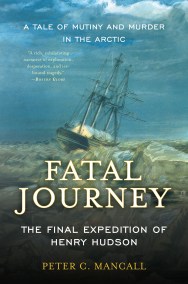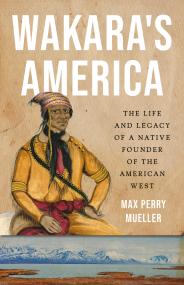Promotion
Use code BEST25 for 25% off storewide. Make sure to order by 11:59am, 12/12 for holiday delivery!
By clicking “Accept,” you agree to the use of cookies and similar technologies on your device as set forth in our Cookie Policy and our Privacy Policy. Please note that certain cookies are essential for this website to function properly and do not require user consent to be deployed.
A Land So Strange
The Epic Journey of Cabeza de Vaca
Contributors
Formats and Prices
- On Sale
- Jan 6, 2009
- Page Count
- 336 pages
- Publisher
- Basic Books
- ISBN-13
- 9780465068418
Price
$17.99Price
$22.99 CADFormat
Format:
- Trade Paperback $17.99 $22.99 CAD
- ebook $12.99 $16.99 CAD
This item is a preorder. Your payment method will be charged immediately, and the product is expected to ship on or around January 6, 2009. This date is subject to change due to shipping delays beyond our control.
Buy from Other Retailers:
“Once you start this book, it’s nearly impossible to put it down.” ―Washington Post
In 1527, a mission set out from Spain to colonize Florida. But the expedition went horribly wrong: delayed by a hurricane and knocked off course by a colossal error of navigation, the mission quickly became a desperate journey of survival. In the end, only four survived: three Spaniards and an African slave. Enduring a horrific march through Florida, a harrowing raft passage across the Louisiana coast, and years of enslavement in the American Southwest, this tiny band journeyed for almost ten years in search of the Pacific Ocean that would guide them home. In this enthralling tale of four castaways wandering in an unknown land, Andrés Reséndez brings to life the vast, dynamic world of North America just a few years before European settlers would transform it forever.
-
"Once you start this book, it's nearly impossible to put it down."Carolyn See, Washington Post Book World
-
"The story of Álvar Núñez Cabeza de Vaca, and of his accidental journey across the American continent, is one of the most remarkable feats of endurance ever recorded.... Reséndez tells this gripping story with zeal.... It is impossible not to be swept along by his enthusiasm."Financial Times
-
“I’m loving this book.”Joe Rogan
-
"Reséndez's story is so riveting you'll wonder why so many history books ignore it."Entertainment Weekly
-
"[Reséndez's] indefatigable scholarship, knowledge of the context, and craftsmanlike storytelling provide a model account: concise, solid, moving."Times Literary Supplement
-
"Reséndez ... shows how Cortez, de Soto and other would-be conquistadors schemed for their kingdoms in the New World like investors jockeying for IPOs."Wall Street Journal
-
"[Reséndez's] voice is original, his writing lucid and gripping."Miami Herald
-
"Reséndez's brisk historical narrative cries out for novelisation."Times (U.K.)
-
"An extraordinary adventure story (which) offers a very different sort of paradigm for Europe's encounter with the Americas."The Scotsman
-
"Andrés Reséndez's new interpretation of this uncanny ordeal of human survival comprehensively reveals the adventure in almost seamless, highly readable prose. He provides a clear background of the politics of the Spanish Conquest, then spins a yarn of unimaginable hardship and a testament to endurance that elicits head-shaking disbelief on almost every page. Amazingly, all of it is true ... Mr. Reséndez's new telling of this astounding tale entertains and captivates from the first page."Dallas Morning News
-
"[Reséndez] misses nothing in telling this riveting quest for gold and glory: prickly pears, pecan nuts, and other plants new to Europeans; migrant tribes in the daily search for food; massacres and treks of naked men across hundreds of miles; and the jealousies and cabals among men like rich fat Diego Velazquez of Cuba; the fierce adventurer and expedition commander Panfilo de Narvaez (who died at sea on a makeshift raft after his coastal 'invasion' of Florida killed virtually all of his men); the rapacious Hernan Cortes who decimated the Aztecs; and various greedy bishops and friars ... This is must and wonderful reading for anyone interested in our mutual histories at a time when Europeans came upon a new world and found themselves irrevocably transformed."Providence Journal
-
"[I]t is Reséndez's clever rewriting of his ordeal—as a survivor's tale—that is most memorable."Texas Monthly
-
"Reséndez is a marvelous storyteller who makes you feel like you are there—even if you're really just lying on the couch."American Way Magazine
-
"One of [the survivors], Álvar Núñez Cabeza de Vaca, the royal treasurer for the trip, wrote a narrative of his adventures, published in 1542. He survived along with two other Spaniards and an African slave. The three Spaniards also issued what became known as the Joint Report. The story that Reséndez (a history professor at the University of California at Davis) tells is woven largely from these two famous accounts, although he interprets them with fresh eyes. He also brings a breadth of knowledge to his story, stopping often for welcome excursions into such subjects as the weather patterns of the period or how one navigates (or in Miruelo's case, fails to navigate) by dead reckoning. The generous elaborations in his endnotes almost form a second narrative."American Scholar
-
"Reséndez's graceful tale of four men who came to accept a new land on its own terms is itself a marvel to behold."Houston Chronicle
-
In sum, Reséndez has written an account that will engage general readers while providing scholars with a guide to the best current scholarship.Journal of American History
-
"Reséndez creates a gripping narrative of one of the most amazing survival stories of all time."Library Journal (starred review)
-
"A riveting account of the epic journey ... Told from an intriguing and original perspective, Reséndez's narrative is a marvelous addition to the corpus of survival and adventure literature."Publishers Weekly (starred review)
-
"Reséndez proves a patient storyteller, employing effective prose hand in hand with the tools of a scholar, including many maps, excellent footnotes and a terrific Further Reading section. The experiences of one of the first outsiders to see the American Southwest still prove fresh and pertinent."Kirkus
-
"Andrés Reséndez has written a definitive account of the remarkable overland journey of Cabeza de Vaca across 16th-century America. This important book brings a seminal yet neglected historical figure into a broad perspective. Displaying impressive skills as one of a new generation of narrative historians, Reséndez tells a compelling story about a little-known chapter in American history. A Land So Strange is destined to become the standard work on the extraordinary journey of this courageous explorer."Brian Fagan, author of The Little Ice Age
-
"The accidental journey of Cabeza de Vaca and his companions across North America is one of the epics of the Age of Exploration. Andrés Reséndez recounts the story in broad context and riveting detail, capturing the lofty, base, cunning, fatuous, cowardly, and heroic actions and motives of an improbable cast of astonishing characters."H.W. Brands, author of Our First Civil War: Patriots and Loyalists in the American Revolution
Newsletter Signup
By clicking ‘Sign Up,’ I acknowledge that I have read and agree to Hachette Book Group’s Privacy Policy and Terms of Use






